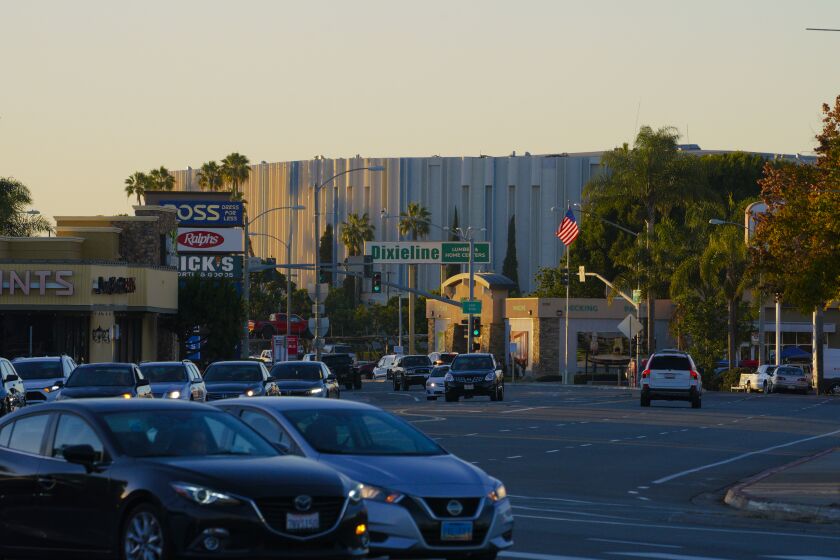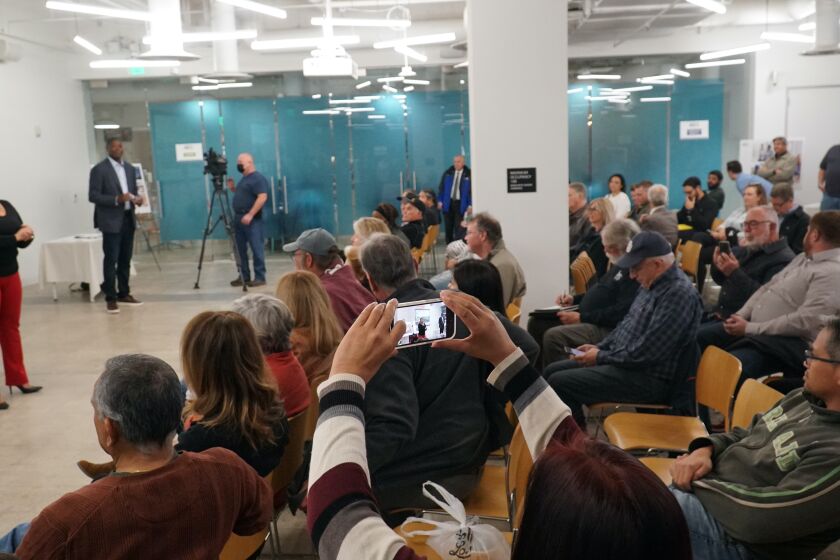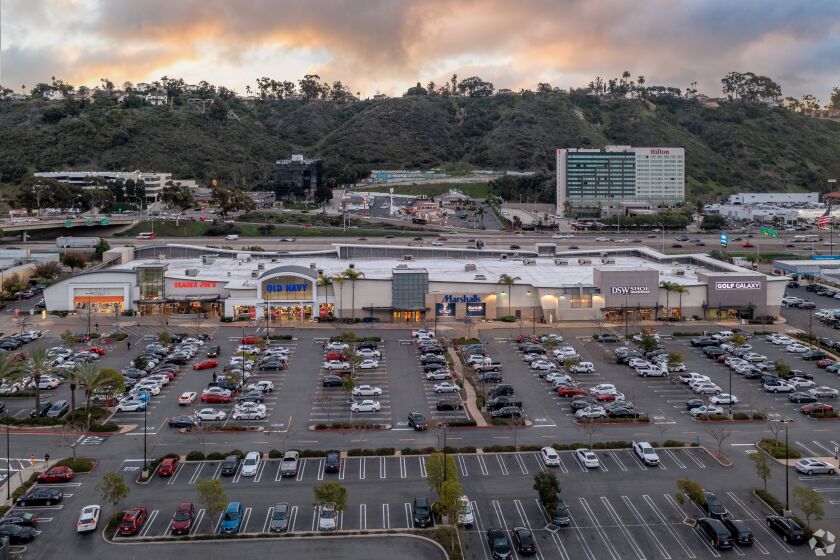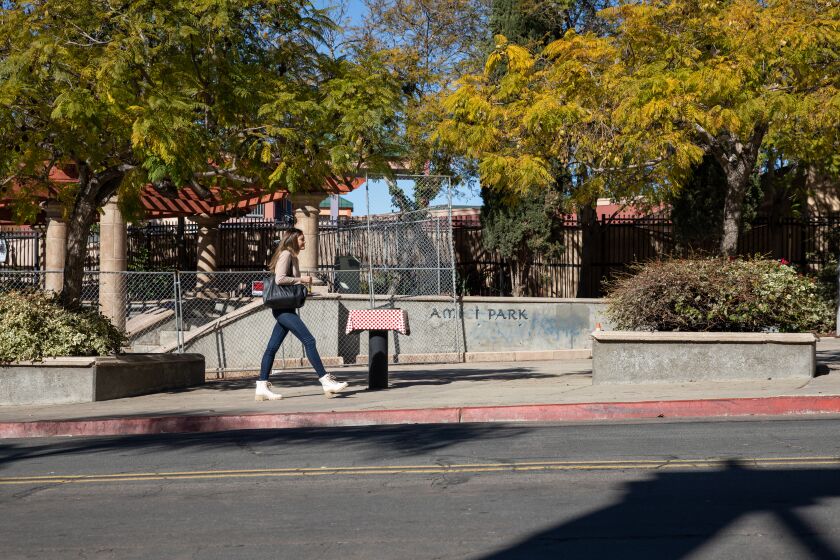San Diego will subsidize downtown’s FRED shuttle service for another year
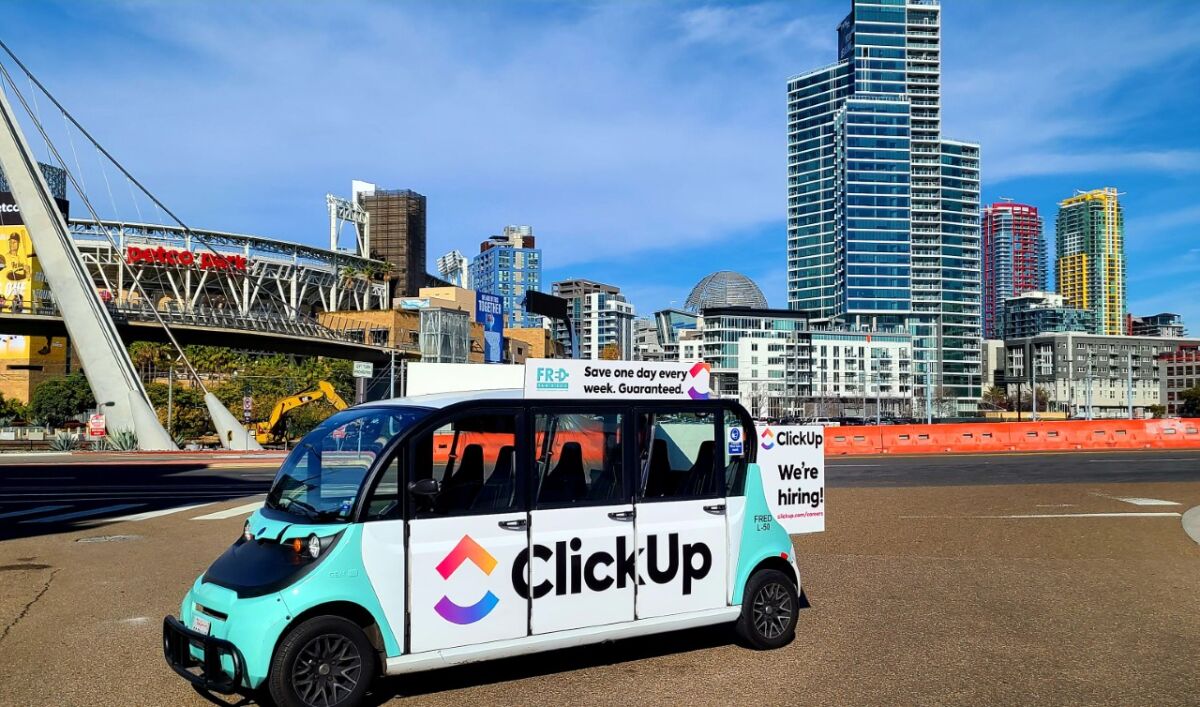
The city will use $1.2 million in downtown parking revenue to continue to cover the cost of free shuttle trips around downtown.
The now-familiar FRED shuttles that cart people around downtown San Diego free of charge will continue to do so for the time being.
Tuesday, San Diego City Council members voted unanimously to spend $1.2 million in downtown parking revenue to extend its contract with operator Circuit Transit through April 20, 2024. However, the contract now includes a 30-day termination clause as the city anticipates shifting gears slightly before the end of the term.
FRED, short for Free Ride Everywhere Downtown, is the San Diego-branded version of Circuit Transit, which locals and visitors can use for no-cost rides across downtown, from Little Italy to East Village. Riders can request pickups from the Circuit mobile app or flag down any of the service’s 20 all-electric, open-air cars.
Started as The Free Ride by co-founders James Mirras and Alex Esposito in 2011, local FRED service dates to 2014. In 2016, the city’s former downtown planning agency, Civic San Diego, stepped in to finance operations, covering the cost for riders with revenue from downtown parking meters and public garages. The city took over the five-year contract in 2019 after Civic was stripped of its city-related duties. The city has since extended the contract three times, including the latest action.
Florida-based Circuit maintains the ride-hail app, runs day-to-day operations, and handles marketing and advertising efforts, whereas San Diego subsidizes the bulk of the service’s cost.
Since it’s launch, FRED’s fleet of electric shuttles have traveled nearly 1.4 million miles and completed 1.2 million trips, saving 120,000 gallons of fuel in the process, a spokesperson for Circuit said. In 2022, ridership averaged 18,000 passengers per month — less than the peak of 23,000 passengers per month in 2019 prior to the pandemic — and totaled 225,000 passengers for the entire year. The cost per rider is $5.33, which is lower than in the past two years but higher than a pre-pandemic low of $4 per rider, with increasing labor costs to blame, the company said.
The latest contract extension is meant to keep the service running as the city prepares to negotiate a longer-term deal with Circuit later this year, piggybacking off of a fleet procurement process run by the San Diego Association of Governments. In July, SANDAG selected Circuit as its neighborhood electric vehicle vendor. The company and the transportation agency are close to signing a deal that would serve as a baseline for contracts with San Diego and other municipalities.
“The SANDAG contract is a basic services contract; the city will then need to negotiate the specifics for the downtown program,” Alyssa Muto, who runs San Diego’s sustainability and mobility department, told the Union-Tribune. “We have had a chance to learn a lot from the present operations, but there are ways the city can receive more efficient and effective operations, including but not limited to data sharing for monitoring, travel demand and complementary mobility solutions; service levels standards; and conformance with city requirements, such as advertising and workforce.”
In other words, the new contract could bring with it a somewhat altered downtown shuttle service, although exact details aren’t being disclosed yet.
“San Diego was an innovator when it adopted this program in 2016, and set an example many other cities have since followed,” said Esposito, Circuit’s CEO. “We look forward to working through the details of a new long-term agreement for a (neighborhood electric vehicle) shuttle service in downtown and are excited about some of the additional innovations that we can bring forward under a long-term contract. We’ll want to maintain the heart and soul of a program many downtowners have grown to love, but will be investing in ways to continue to improve efficiencies so the system can serve even more people over the next several years.”
Council members approved the extension as part of Tuesday’s consent agenda, meaning they considered the matter without discussion.
Get U-T Business in your inbox on Mondays
Get ready for your week with the week’s top business stories from San Diego and California, in your inbox Monday mornings.
You may occasionally receive promotional content from the San Diego Union-Tribune.

